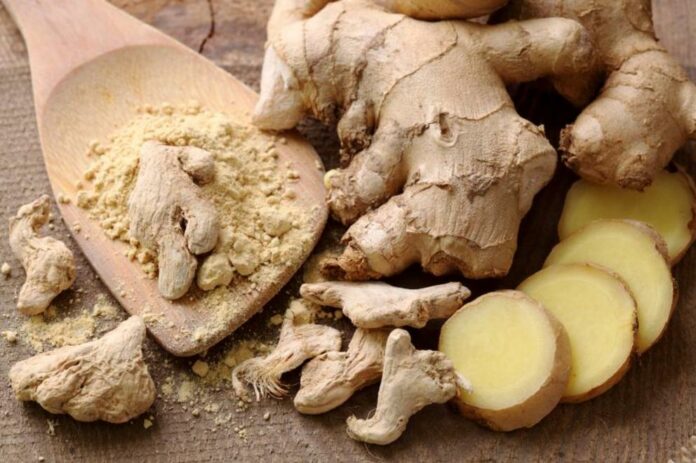Here’s how GINGER helps ease anxiety
Ginger (Zingiber officinale) is often added to savory dishes for its sharp taste. It is also brewed into a tea and imbibed for its digestive benefits. However, this rhizome has been proven to help relieve the symptoms of anxiety.
A study published July 2017 in the Indian Journal of Pharmaceutical Education and Research outlined the anxiety-reducing effects of ginger in animal studies. The study authors compared ginger extract with the anti-anxiety drug diazepam by administering both in laboratory mice. They also administered ginger extract to the mice in varying doses.
The researchers from Iran found that the mice groups given ginger extract had lower levels of anxiety based on tests, compared to the group given diazepam and the control group given none at all. They also noted that mice given high doses of ginger extract had increased movement activity. The study authors thus concluded that ginger extract “can be an appropriate replacement for diazepam to reduce anxiety symptoms.”
Another study published May 2010 in Bioorganic & Medicinal Chemistry found that several compounds in ginger bind to the neurotransmitter serotonin. In particular, nine compounds in the rhizome interact with the mood-regulating chemical. The study authors wrote: “Ginger preparations are traditionally used to improve well-being and to treat mild forms of mental disharmony or migraine,” attesting to the positive effects of the rhizome on anxiety.
Ginger is versatile, and can be consumed in more ways than one. Unlike conventional medications for depression and anxiety, ginger does not pose the risks of addiction and side effects. One can prepare and enjoy ginger with the recipes below.
Ginger tea
Here’s an easy recipe for brewing ginger tea.
Ingredients for one serving:
- 1 ½ tablespoons of grated ginger root
- 1 ½ cups of water
- 1 teaspoon of raw honey (or desired amount to taste)
Preparation:
- Bring water to a boil. Add the ginger and let it steep for approximately five to 10 minutes. Pour in your mug, add the desired amount of honey and enjoy. You can add more or less ginger or water for the strength of its taste.
- You can sweeten your tea with honey as long as the tea isn’t too hot because excessive heat destroys the nutritional value of honey, which provides you with additional health benefits like boosting your immune system and easing anxiety and depression.
- For ginger ice tea, after steeping pour tea into a glass filled with ice. Garnish with blueberries, mint leaves and a squeeze of lemon for a summery taste.
Ginger syrup
Ginger root makes a wonderful syrup, with a punchy flavor that works really well in cocktails, smoothies and even soft drinks to enhance their flavor.
Ingredients:
- ¾ cup water
- ½ cup of honey (or another natural sweetener of your choice)
- 1 tablespoon grated fresh ginger
Preparation:
- Simply boil equal amounts of sugar and water.
- Add some freshly grated ginger and let the mixture steep for 10 minutes before straining.
- Your ginger syrup will keep up to two weeks in the refrigerator.
Ginger-lemon lozenges
Making homemade all-natural ginger-lemon lozenges is just like making candy, but you have to be careful not to burn the mixture.
Ingredients:
- 1/2 cup raw honey
- 2 tablespoons organic lemon juice
- 1 teaspoon freshly grated ginger root
- 1/4 cup powdered cane sugar (optional for dusting)
Kitchen tools needed:
- Candy thermometer
- Candy mold with small openings
Preparation:
- Measure the honey, lemon juice and grated ginger and pour it all into a saucepan. With a wire whisk, stir the mixture as it heats to a boil. It will become foamy and start to climb up the sides of the pan.
- Remove it from the heat to allow the foam to subside and continue to whisk it until the foam reduces. Afterward, put it back over the heat to boil again while constantly stirring so the mixture doesn’t burn.
- Repeat until the temperature of the mixture reaches 300 F / 149 C degrees when measured with a candy thermometer.
- Drop a bit of the mixture into a glass of ice water (or, dip a spoon into the mixture and then quickly dip it into the ice water). If the mixture forms a hard, crunchy ball, it’s ready. If not, keep up with the whisking and heating and try again in a minute or so. Once a hard ball forms in the ice water, you’re good to go.
- Use a regular teaspoon to drop circles of the mixture onto a silicon baking mat and set it aside to cool for about 30 minutes. Alternatively, use a candy mold to form the ginger-lemon cough drops or lozenges.
- Let it cool in a safe place (not the freezer or fridge) until the cough drops are hard. When they are hard, press on the back of the mold to release. Or, if you’re not using a mold, break the cough drops up into pieces.
- An optional step to prevent sticking: In a small bowl, mix the powdered sugar with the vitamin C powder. Drop the cough drops into the mixture to coat. Pour the sugar and cough drops into a sieve and sift to remove extra sugar.
- Store in an airtight container. These actually do better in the fridge, as they attract moisture and tend to get sticky if left out.

